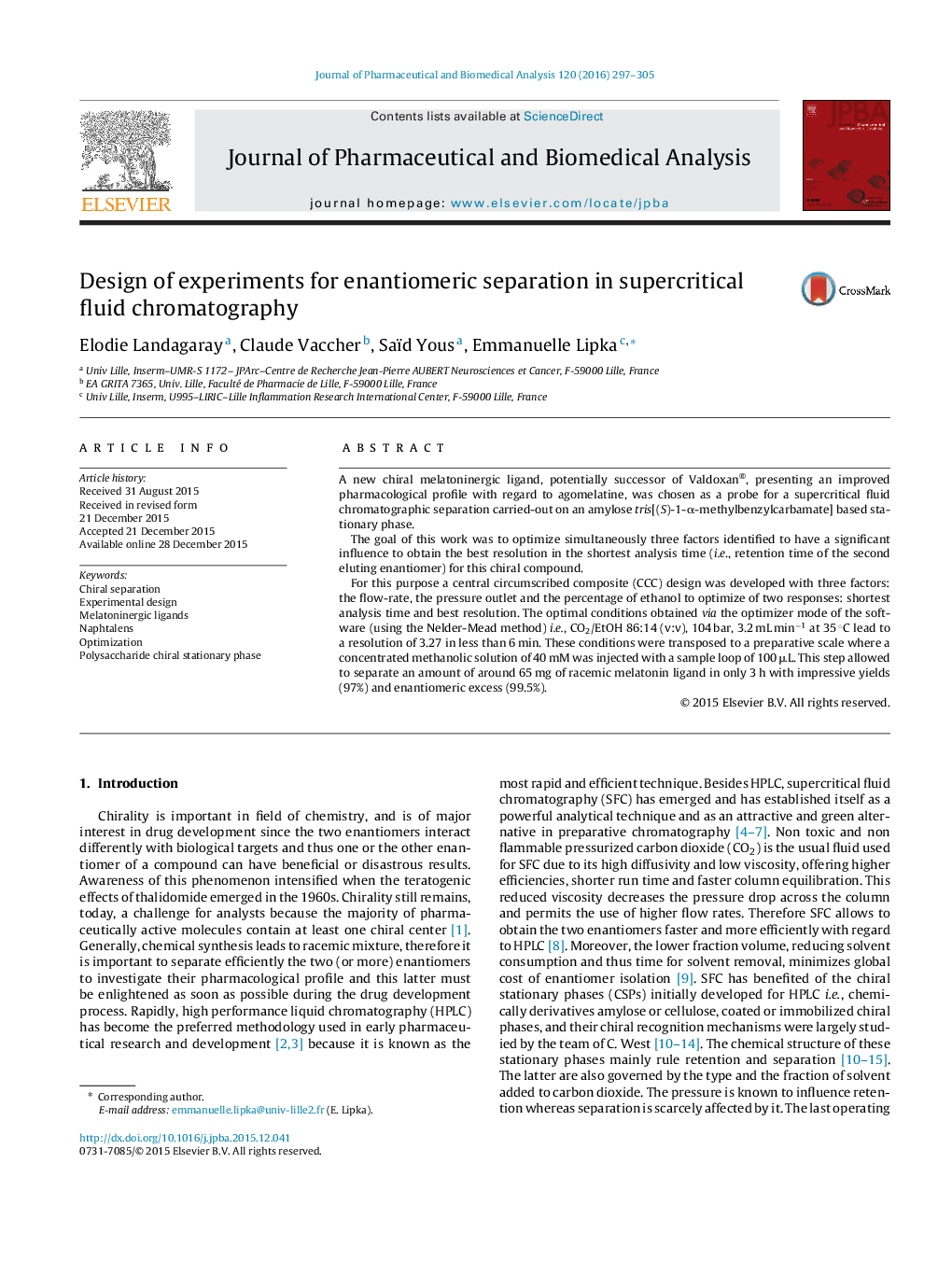| Article ID | Journal | Published Year | Pages | File Type |
|---|---|---|---|---|
| 1220572 | Journal of Pharmaceutical and Biomedical Analysis | 2016 | 9 Pages |
•Combined effect of ethanol percentage, pressure and flow-rate is studied in SFC.•Design of experiments is implemented to determine optimal conditions.•Ethanol fraction was most important for retention, and resolution.•Optimized conditions were used to carry out preparative scale.
A new chiral melatoninergic ligand, potentially successor of Valdoxan®, presenting an improved pharmacological profile with regard to agomelatine, was chosen as a probe for a supercritical fluid chromatographic separation carried-out on an amylose tris[(S)-1-α-methylbenzylcarbamate] based stationary phase.The goal of this work was to optimize simultaneously three factors identified to have a significant influence to obtain the best resolution in the shortest analysis time (i.e., retention time of the second eluting enantiomer) for this chiral compound.For this purpose a central circumscribed composite (CCC) design was developed with three factors: the flow-rate, the pressure outlet and the percentage of ethanol to optimize of two responses: shortest analysis time and best resolution. The optimal conditions obtained via the optimizer mode of the software (using the Nelder-Mead method) i.e., CO2/EtOH 86:14 (v:v), 104 bar, 3.2 mL min−1 at 35 °C lead to a resolution of 3.27 in less than 6 min. These conditions were transposed to a preparative scale where a concentrated methanolic solution of 40 mM was injected with a sample loop of 100 μL. This step allowed to separate an amount of around 65 mg of racemic melatonin ligand in only 3 h with impressive yields (97%) and enantiomeric excess (99.5%).
Graphical abstractFigure optionsDownload full-size imageDownload as PowerPoint slide
